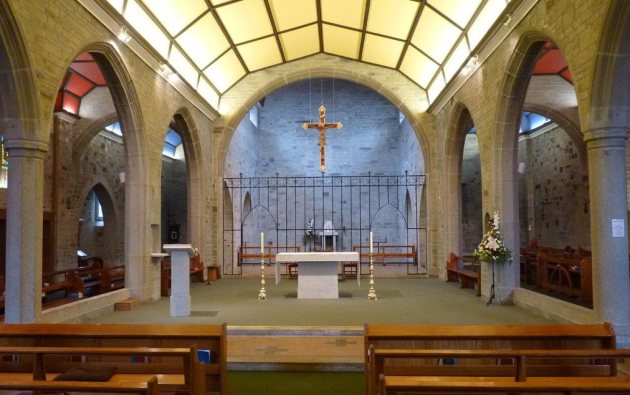Bodmin, means ‘home of monks’ in Cornish (bod: abode, mench: monk). A medieval Life of St Petroc speaks of a Saint Wron (or Guron) who was a hermit in Bodmin, who gave Petroc hospitality around the year 518. St Petroc came to Padstow from Ireland where he founded a monastery. After his death he was venerated as a saint and Padstow became a place of pilgrimage. After a Viking raid in 981 the major part of the community in Padstow moved to Bodmin, bringing the saints relics with them. In the 12th century the Canons Regular of the Lateran, otherwise known as the Augustinian Canons, established a priory in Bodmin. 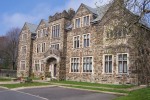 This became the largest religious house in Cornwall. The priory was suppressed on 27 February 1538 and the buildings were destroyed and despoiled, with the exception of the parish church, which is now the Anglican church in Bodmin. For 250 years after this the practice of the Catholic faith was officially illegal in England. The Catholic mission in
This became the largest religious house in Cornwall. The priory was suppressed on 27 February 1538 and the buildings were destroyed and despoiled, with the exception of the parish church, which is now the Anglican church in Bodmin. For 250 years after this the practice of the Catholic faith was officially illegal in England. The Catholic mission in 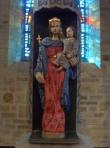 Bodmin owed its beginning to Fr William Young. This zealous priest, having already founded a mission in Penzance, moved to Bodmin where he enabled the Catholic Church to buy some land on which he built a presbytery and a church dedicated to the Blessed Virgin in 1845. From that time the Bodmin mission was served periodically from Plymouth, a priest being resident only rarely. From 1877 we know Mass was said on the second Sunday of alternate months by a priest from Liskeard.
Bodmin owed its beginning to Fr William Young. This zealous priest, having already founded a mission in Penzance, moved to Bodmin where he enabled the Catholic Church to buy some land on which he built a presbytery and a church dedicated to the Blessed Virgin in 1845. From that time the Bodmin mission was served periodically from Plymouth, a priest being resident only rarely. From 1877 we know Mass was said on the second Sunday of alternate months by a priest from Liskeard.
The care of souls in Bodmin passed from the diocese back to the Canons Regular of the Lateran in 1881. We have this letter from the superior of the Order at that time, Abbot Santini, in which he expresses his hope that he might see the Order re-established in England: “Among the chief concerns of our office is the duty where houses of our Order have been destroyed they shall be restored to the glory of God and for the good of souls. Since the Order once flourished in England and later ceased completely due to the injustices of the times, we, inspired especially by the nuns of our Order of Canonesses in the Diocese of Plymouth, and encouraged by the kindness of the Bishop of Plymouth, began to think of restoring our Order in that country.” Bishop Vaughan issued his decree of authorisation on 23 August of the same year: “We receive you canonically in our Diocese of Plymouthand we give you the church of St Mary, with the house and adjoining land to serve your community on condition that you have the care of souls in Bodmin and the surrounding district. We shall not cease to have your community at heart and we are certain that for your part you will endeavour to give every reasonable assistance in the evangelisation of Cornwall, which was the last county to give up the faith…”
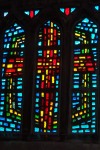 The Priory at Bodmin was given the status of an Abbey in 1953. The foundation stone of the present church was laid in 1937 but the war caused the building works to be delayed for many years, and it was not until 24 June 1965 that the church was consecrated by Bishop Restieaux. It is a fine building of local stone, with a nave of three bays, sanctuary, choir and vestries. The fenestration was designed and made by the monks of Buckfast Abbey in their distinctive style.
The Priory at Bodmin was given the status of an Abbey in 1953. The foundation stone of the present church was laid in 1937 but the war caused the building works to be delayed for many years, and it was not until 24 June 1965 that the church was consecrated by Bishop Restieaux. It is a fine building of local stone, with a nave of three bays, sanctuary, choir and vestries. The fenestration was designed and made by the monks of Buckfast Abbey in their distinctive style.
The Catholic Church in Cornwall owes a huge debt to the Canons Regular, who were responsible for founding the great majority of the present Catholic churches in Cornwall. Members of the community are buried in the Canons Regular cemetery in Bodmin on land adjacent to the church.
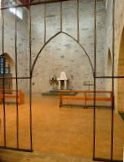 Very recently the interior of the church has been re-ordered. The Blessed Sacrament, which had been moved to a side altar, has been moved back into the centre of the sanctuary and placed on a pedestal against the back wall of the church. A iron grille now surrounds this area, which would have originally been the sanctuary of the church to enclose the Blessed Sacrament and enable the area to be used for quiet prayer. A new stone altar and lectern have been placed in the new sanctuary area. The new altar was consecrated by Bishop Christopher Budd on 14th August 2011.
Very recently the interior of the church has been re-ordered. The Blessed Sacrament, which had been moved to a side altar, has been moved back into the centre of the sanctuary and placed on a pedestal against the back wall of the church. A iron grille now surrounds this area, which would have originally been the sanctuary of the church to enclose the Blessed Sacrament and enable the area to be used for quiet prayer. A new stone altar and lectern have been placed in the new sanctuary area. The new altar was consecrated by Bishop Christopher Budd on 14th August 2011.

